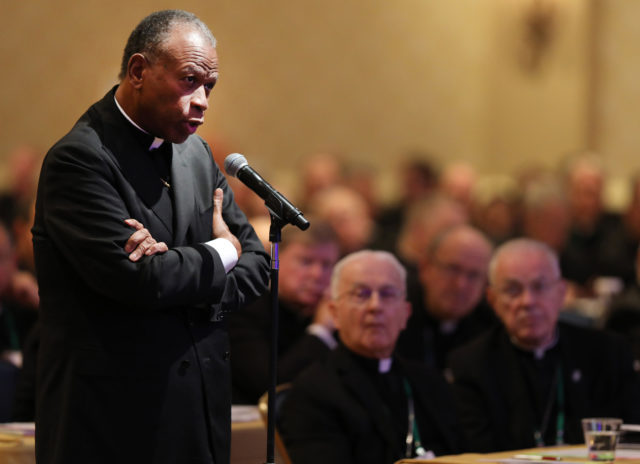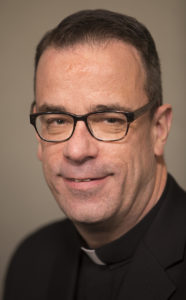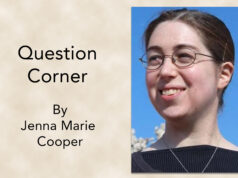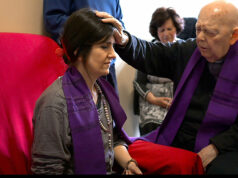
This interview has been edited for length and clarity.
What is a bishops’ conference and what role does it have?
A bishops’ conference is the assembly of the bishops of a particular region or country. In the United States it would be the U.S. Conference of Catholic Bishops.
All the diocesan bishops, the auxiliary bishops, the eparchs all come together and form the USCCB. It’s an assembly of bishops that carries out certain pastoral functions on behalf of the faithful of their region — things that only can be accomplished on a national level, they can’t just be accomplished on a regional or local level.
When in church history did bishops’ conferences start?

We could speak about implicit and explicit bishops’ conferences. Implicitly we go all the way back to the New Testament when the apostles gathered around Jesus. Throughout history the church has identified the need to organize that gathering.
The U.S. Conference of Catholic Bishops was officially organized 101 years ago.
What authority does a bishops’ conference have? Does a bishops’ conference supersede the authority of a bishop in his own diocese?
The authority given to the church, entrusted especially to our Holy Father, goes back to Matthew 16 and John 21 — You are Peter and upon this rock I will found my church. The pope then sends a bishop to each particular diocese.
When the bishops come together in a region, it’s a collegial authority. It’s a fraternity, a brotherhood, that comes together for certain pastoral functions.
What does a bishops’ conference do on a daily basis, or year to year?
The bishops’ conference staff comes together to work under the authority of the bishops who have founded certain priorities or goals. The long-range goals are found in the name of their various committees: human life and dignity, cultural diversity, migration, pro-life, clergy, consecrated life, vocations, laity, marriage, family life and youth.
That’s really what a bishops’ conference does on a daily basis. Organizes that work so that the bishops in each region — 15 regions, across 197 jurisdictions in the United States — have resources to teach the faithful.
How often do the bishops meet and what do they do at those meetings?
The bishops meet twice a year. The president convenes them twice a year as the body of bishops in June and in November. That’s the full authority of the bishops’ conference for those days when they’re joined together.
When they meet they go over their strategic plan, what they have set across all those areas I just mentioned. They take the fruit from their chairmen, their brother bishops, from their committees who have put their strategic plan into action and they see it as action items and they say this is what we’re going to address.
They also address very immediate circumstances as we saw last June with migration, the children at the border, separated children, so as to work very directly and immediately for the least of these, those who are suffering.
Can you describe a recent pastoral letter issued by the USCCB and how the conference worked to compose and vote on it?
Most recently it was the pastoral letter against racism. The conference came together across committees as a priority item. It worked across various sectors of the conference so that every part of the elected leadership could weigh in, consulted with outside organizations, with laypeople, men and women religious, to come together to look at this terrible scourge in our history, in our country, the sin of racism.
The bishops worked for a period of time on that, looked at various drafts, had a chance to amend the draft so that they could bring it into the exact place that they wanted it so it could address everyone at various levels in society, call us all to a deeper spirit of repentance and renewal but also produce other resources from it and allow people to go forth and preach, to teach, to use that as hinge point, basis point to make the message their own.
That’s the purpose of pastoral letter — to highlight a key, essential teaching that is indispensable for our times and to write it in our hearts so it becomes a principle within us.
What do you think are some common misconceptions about bishops’ conferences?
Part of the misconception might be to think that we have ultimate authority over everything about the church. A bishops’ conference is a convening, it’s an assembly of the bishops who come together in unity to work as a college, a collegial authority, under the pope and in union with the pope to address the signs of the times. That’s really the key message.
I think sometimes people when they write in or contact us, they might wish we had more immediate, local authority, that we could make this or that particular thing happen in a diocese or a parish — that’s really not the bishops’ conference.
We give resources, principles, we produce a wide range of materials and messages that the bishops can then make their own and apply them locally. We’re not to replace the work of the local bishop; we’re meant to enhance it and assist it.
Msgr. J. Brian Bransfield is the general secretary for the U.S. Conference of Catholic Bishops.







